Search Images
Browse Content (p. 1084)
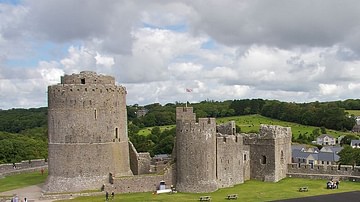
Image
Pembroke Castle Keep
The keep of Pembroke Castle, Wales, built by the famous English knight Sir William Marshal (c. 1146-1219 CE).
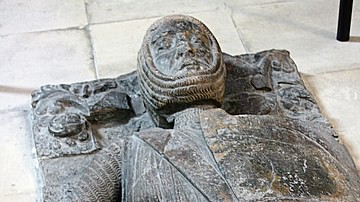
Image
Tomb of Sir William Marshal
The tomb of the famous English knight Sir William Marshal (c. 1146-1219 CE), who was also Protector of the Kingdom and regent for Henry III (1216-1272 CE). Temple Church, London.
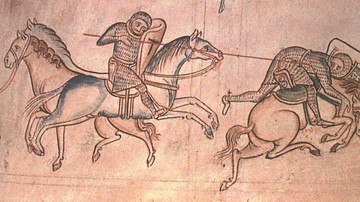
Image
William Marshal Fighting Baldwin Guisnes
A 13th century CE illustration of the famous English knight Sir William Marshal (c. 1146-1219 CE) unseating Baldwin Guisnes. (From the Historia Major of Matthew Paris, Cambridge, Corpus Christi College Library, vol 2, p. 85)
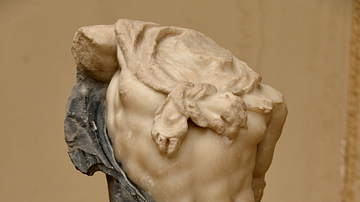
Image
Bicolored Statuette of Triton
This what has remained from a bi-colored marble statuette of Triton; the statuette was a product of the ateliers at Byzantium. Triton was a god and the messenger of the sea; he was the son of Poseidon. Roman Period, 2nd century CE. From the...
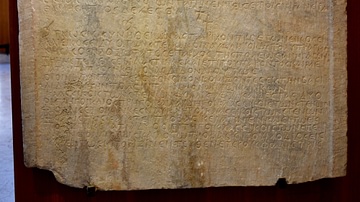
Image
Law of Anastasius I Dicorus
Marble slab inscribed in Greek. This is the law of the Byzantine Emperor Anastasius I Dicorus (reigned 491-518 CE), regulating the passage through Dardanelles customs. Byzantine Period, 6th century CE. From Abydos, Çanakkale, in modern-day...
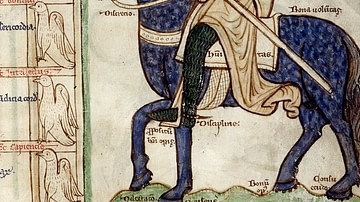
Image
Knight Battling the Seven Sins
A 13th century CE illustration of a knight about to battle the Seven Deadly Sins. From the Summa Vitiorum or "Treatise on the Vices" by William Peraldus.
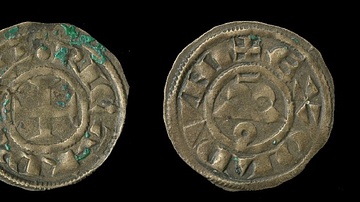
Image
Coin of Richard Lionheart
Official coin of King Richard I Lionheart (reigned 1189-1199 CE), struck in 1195 CE in Issoudun (formerly Exoldunum). The obverse is inscribed RICARD'REX ("KING RICHARD"). The reverse reverse is inscribed EXOLDUNI ("FROM ISSOUDUN"). (British...
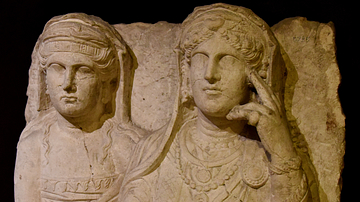
Image
Funerary Relief from Palmyra of a Woman and Daughter
This relief depicts an older woman with her daughter. They are set in a line, represented frontally, stiff, and lifeless. Both of them wear turbans and headbands. At their temples, long strands of hair are combed back and tucked into the...
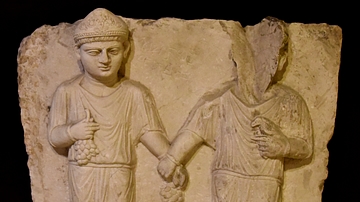
Image
Funerary Stele of Two Boys from Palmyra
The two young boys were represented frontally and are of a similar height. They wear the same type of clothes. The boy on the left side holds a bunch of grapes in each hand. The boy on the right grasps the left wrist of the right boy and...
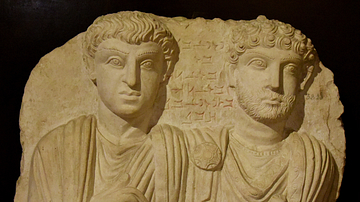
Image
Funerary Relief from Palmyra of a Man and his Son
The inscription on this funerary relief says that the two figures are "Yedi Bel" and his son "Zabde'atach". Limestone. Roman Period, 200-273 CE. From Palmyra, in modern-day Syria. (Museum of Archaeology, Istanbul, Turkey).